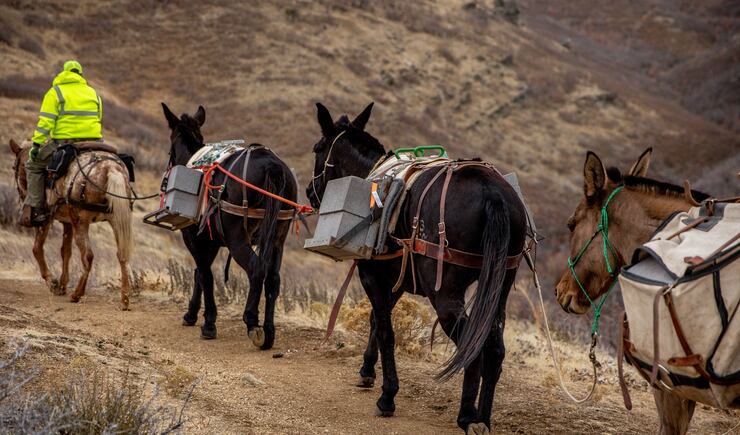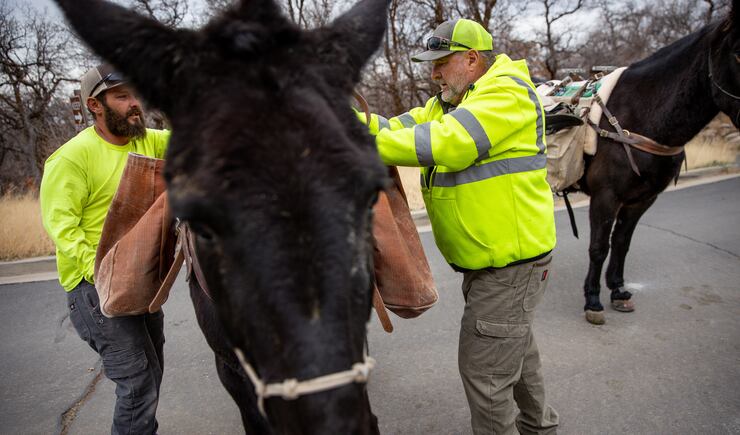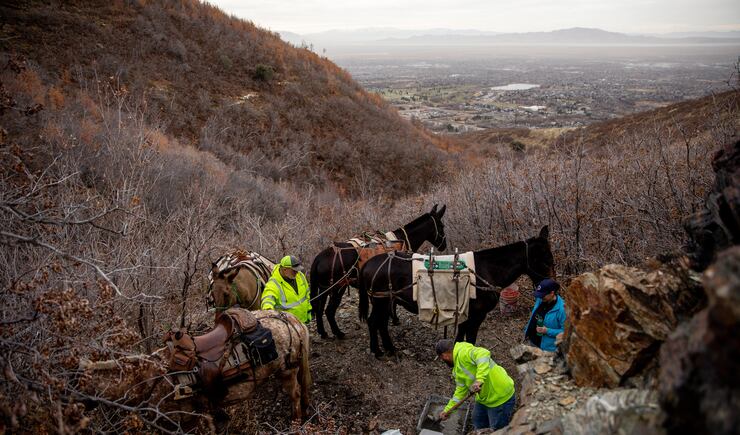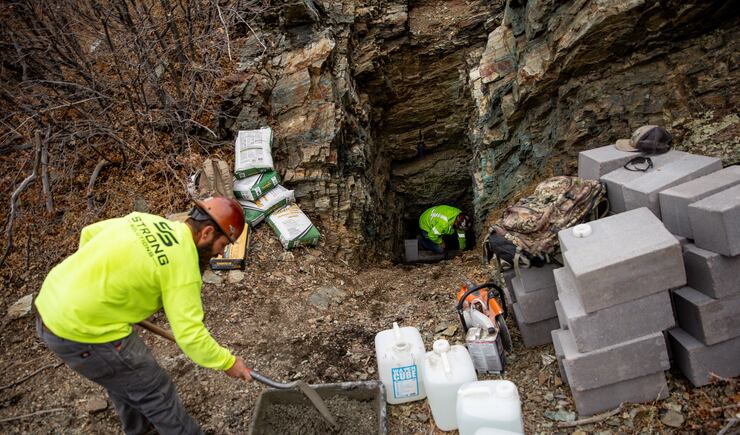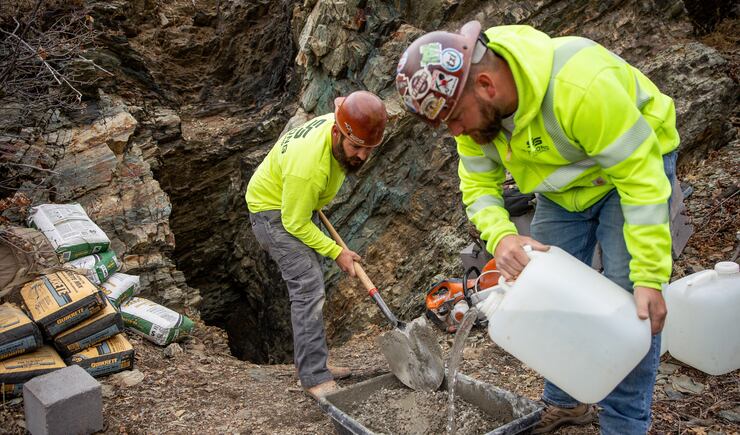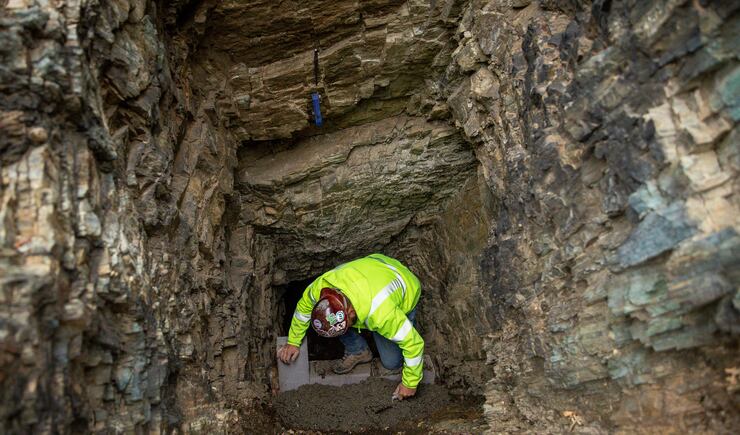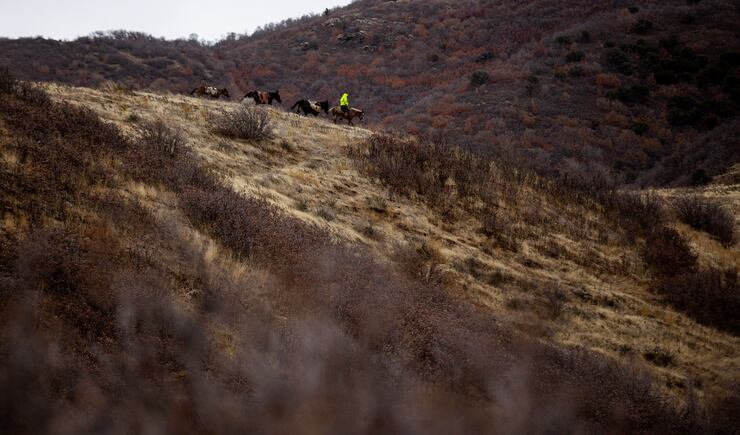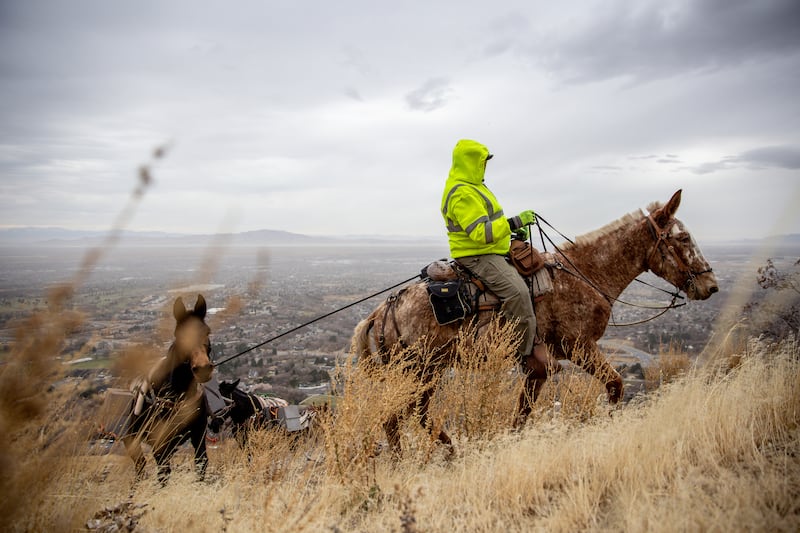LAYTON — It’s a steep climb up this mountainside sandwiched between Cherry Lane and Antelope Drive east of U.S. 89.
But in less than a mile’s journey, the land reveals a mine opening on U.S. Forest Service land.
For a few November days during crisp but sunny fall weather, a mule train navigated the rugged landscape, hauling equipment to the top to permanently close the mine.
Mules are just one of many methods used by the Utah Division of Oil, Gas and Mining to tackle the closure of an estimated 17,000 mine openings across the state. Most of those openings are on land overseen by the Bureau of Land Management, but a few exist on Forest Service land, parcels owned by other government entities and some are on private property, like the hundred plus that exist in the Wasatch canyons.
Closure of mine openings is a top priority in Utah and around the country, especially if they are close enough to threaten critical drinking water supplies. The openings also pose extremely dangerous public safety threats, with unwitting explorers risking cave-ins, falls into deep underground tunnels, exposure to dangerous fumes and other hazards.
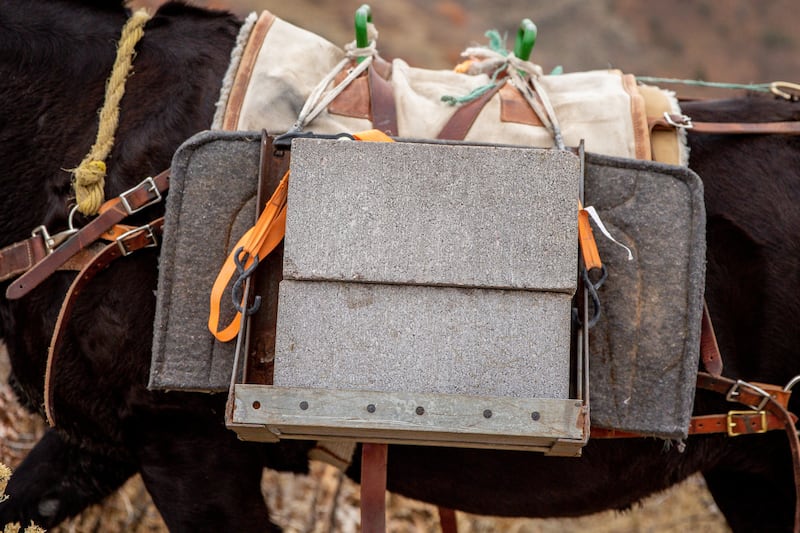
Steve Fluke, who heads up the division’s abandoned mine reclamation program, said the agency works closely with landowners and other government entities on mine closures, which typically cost anywhere from $3,000 to $5,000 — paid for with funding the agency receives. There is no cost to a private landowner, who can chose to have the mine closed or not.
“We do the actual work, everything. It does not cost them a thing. They just have to give us a right of entry,” he said.
How mines are closed often depends on the particular terrain where they are located, with methods in Utah delegated to speciality contractors.
In this instance, mules were the preferred option given the weight of the closure equipment and the steep hillside. The animals easily navigated the hike, where the work could begin.
“We gave the contractor the option of using pack animals or a helicopter to move the material,” said Jan Morse, an environmental scientist with the division’s abandoned mine reclamation program. “We have had contractors use helicopters several times, and we have used mules several times. This particular group of mules did some work for us in 2011 in Salt Lake County. They are sure-footed and strong, with each animal carrying about 240 pounds.”
This particular project involved the closure of nine mine openings, with some being as far north as Ogden while the last closure happened near the Bountiful Utah Temple of The Church of Jesus Christ of Latter-day Saints.
Morse said mine closures are prioritized based on three factors, including proximity to residential populations or if they are located in more remote locations that nevertheless attract the recreating public. The division also looks at how accessible the mine openings are to a roadway or trailhead.
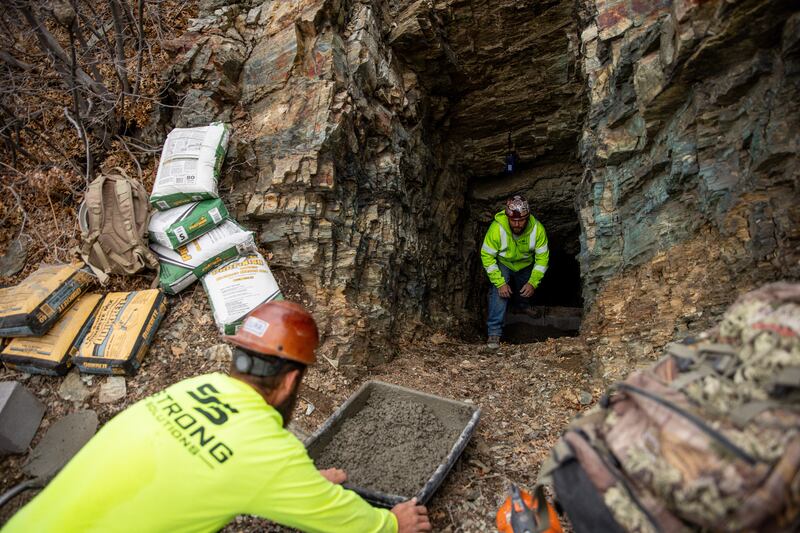
Four years ago, the division received the nation’s highest achievement award for eliminating physical safety hazards, a recognition given by the National Association of Abandoned Mine Land Programs.
The award celebrated a two-year effort the division carried out to secure more than 170 Cold War-era uranium mines in a partnership that included the BLM and Emery County.
Since there was no road access, the contractor had to use helicopters, all-terrain vehicles and pack horses to reach the abandoned mines, which were in an area popular for camping, hiking and four-wheeling.
The division averages a couple hundred mine closures per year.
